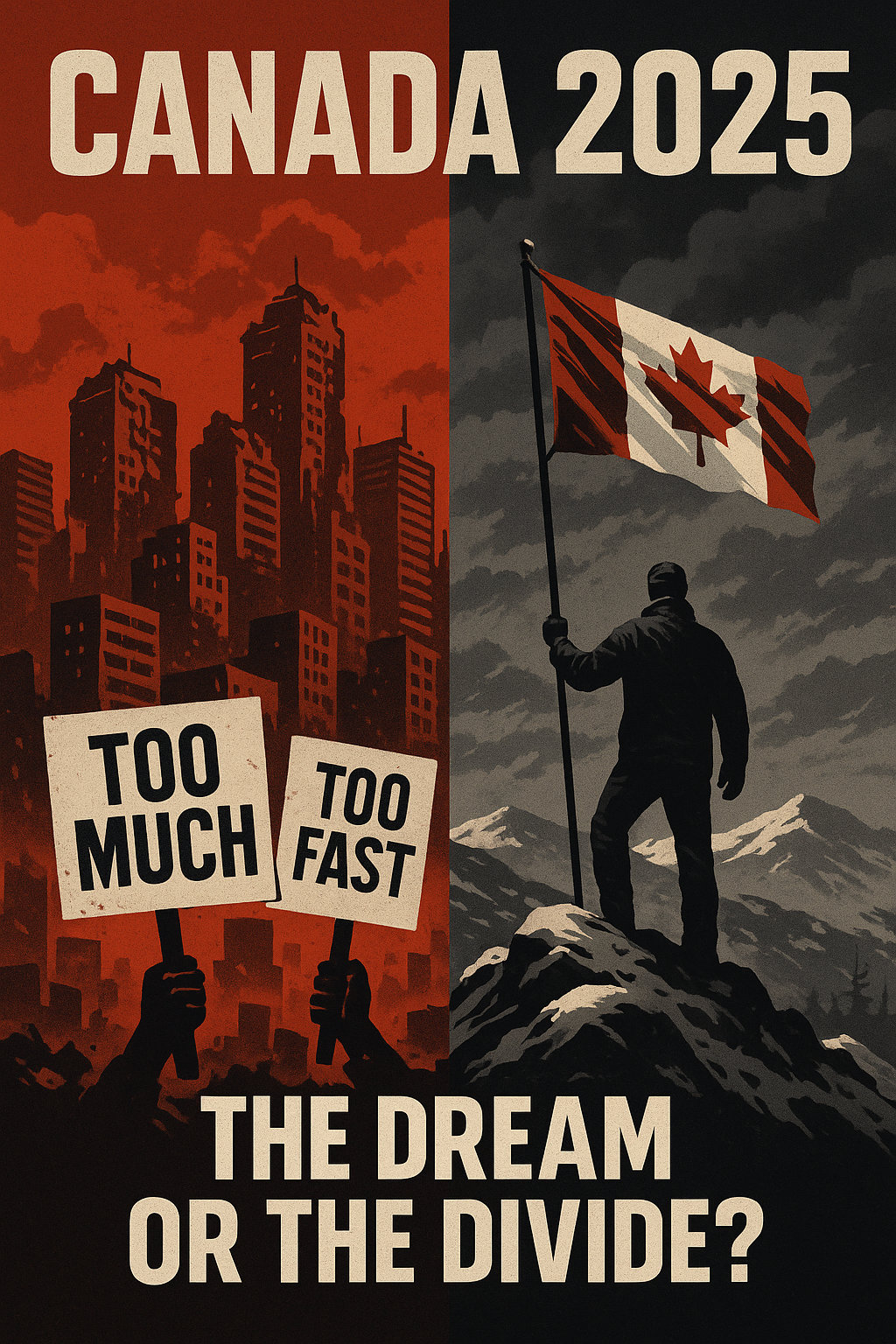
Canada’s 2025 Reality Check: Immigration Divide, Vanishing Middle Class, and Climate Doubt Rising
Share
Canada enters 2025 standing at a crossroads — a nation once defined by quiet confidence now wrestling with disillusionment. Inflation bites, housing dreams die young, and the promise of green prosperity starts to sound like an expensive illusion. Behind the polite headlines lies a public fed up with half-truths and broken promises.
The Immigration Tipping Point
For decades, Canada’s immigration system was held up as a model of fairness. But something has cracked. A September 2025 Environics poll reveals 44% of Canadians believe immigration levels are “too high,” compared to 27% just three years ago. The shift isn’t rooted in hatred — it’s born of exhaustion. Sky-high rents, grocery bills that rival mortgage payments, and job competition have made everyday Canadians question who benefits from Ottawa’s open-door approach.
Even as 51% still acknowledge immigration’s economic importance, patience is wearing thin. Toronto’s skyline grows higher while its homeless camps spread wider. Rural Canada, especially Alberta and Manitoba, voices a harsher truth: when services buckle and towns struggle to house their own, compassion feels like a luxury.
The federal response — trimming 2025 immigration targets by 20% — feels cosmetic. The question Canadians now whisper, sometimes angrily, is whether compassion without control is still sustainable.
The Death of the Canadian Dream
Once, Canada promised that hard work meant a better life. Now, that belief is fading like frost in April. Sixty-two percent of Canadians say it’s harder to get ahead than ten years ago. Wages stagnate, debt rises, and the younger generation is trapped in a permanent rental purgatory.
A graduate in Vancouver can work three jobs and still not afford a studio apartment. A single mother in Hamilton skips meals so her kids can eat. Meanwhile, the top 1% hold a quarter of the nation’s wealth. “Economic mobility” has become a museum piece — a relic from an era when effort still meant advancement.
Politicians toss out tax credits and rebates like lifebuoys in a hurricane. The public sees them for what they are: political aspirin for a terminal illness.
The Green Illusion
Canadians care about the planet — but they also have to pay for groceries. While 53% support emissions cuts, nearly half doubt current policies will work. The carbon tax has become a national Rorschach test: some see moral duty, others see daylight robbery.
A Pollara survey found 61% believe climate initiatives drive up costs without delivering results. It’s not denial — it’s fatigue. From $15-billion adaptation funds to electric car mandates, Ottawa’s green crusade feels like a sermon from elites who never check gas prices.
Alberta’s petition for a new oil pipeline isn’t rebellion; it’s survival. Workers know a pink slip when they see one, even when it’s disguised as “net zero.”
A Country Fractured, But Not Broken
Underneath the cynicism, there’s still a heartbeat — a stubborn belief that Canada can rebuild if it remembers who it’s fighting for. Sixty-seven percent still believe in collective action, but they want leadership that listens, not lectures.
If 2025 exposed the fractures, then 2026 will test whether Canada can mend them. Real reform means less talk about “targets” and more about roofs over heads, paychecks that matter, and policies rooted in reality, not ideology.
The Great Canadian Myth — that everyone has a fair shot — may be dying, but it’s not dead yet. If this country has one more fight left in it, it’ll be the fight to make that dream real again.
